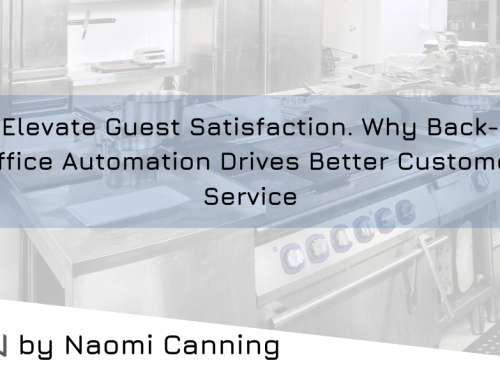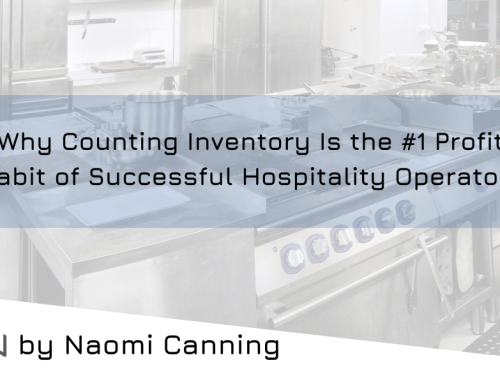Introduction To Inventory Management
In today’s competitive food services landscape, mastering inventory management is essential for businesses looking to streamline operations and drive growth.
With a staggering 43% of small businesses struggling with inventory management, understanding its intricacies can lead to reduced costs, improved efficiency, and enhanced customer satisfaction.
In this comprehensive guide, we will explore the importance of effective inventory management processes and present practical techniques that can be employed to take control of your stock levels.
Key Takeaways
- Effective inventory management plays a crucial role in reducing costs, improving cash flow, enhancing customer satisfaction, and increasing overall efficiency.
- Techniques for mastering inventory management include implementing inventory control systems and regular audits, forecasting inventory needs using software, establishing clear policies and procedures for inventory management with employee training sessions, monitoring inventory performance metrics such as turnover rate and days of supply to continuously improve strategies.
- Forecasting inventory needs accurately can be achieved by utilizing advanced tools such as cloud-based inventory management systems. that automate tracking inventory levels while minimizing manual errors in data entry- ultimately leading towards sustainable growth for businesses.
- By consistently evaluating performance metrics while making adjustments where necessary based on data-driven insights through effectively managing business operations via optimized inventory management processes– companies can create long-term value that translates into increased profitability and sustained growth.
The Importance of Effective Inventory Management
Effective inventory management is crucial for businesses to reduce costs, improve cash flow, enhance customer satisfaction, and increase overall efficiency.
Reducing Costs And Improving Cash Flow
Effective inventory management plays a critical role in reducing costs and improving cash flow for businesses. By maintaining optimal stock levels, companies can avoid spending on excess inventory that may not sell or go unsold for an extended period.
In addition to minimizing costs, proper inventory management also leads to improved cash flow. A well-managed inventory ensures the efficient allocation of resources toward profitable products while offloading stagnant or slow-moving items through discounts or targeted marketing efforts.
This approach enables businesses to generate revenue by selling their products promptly without overinvesting in less successful items.
Enhancing Customer Satisfaction And Increasing Efficiency
Effective inventory management plays a crucial role in enhancing customer satisfaction, which ultimately leads to increased efficiency and productivity within your business.
By maintaining optimal stock levels and ensuring that products are readily available when needed, you can meet customer demands promptly and efficiently.
For instance, imagine a scenario where two businesses offer the same product at comparable prices; however, one consistently has items in stock while the other frequently experiences shortages due to poor inventory management.
Similarly, by implementing solid inventory management processes such as utilizing inventory management software or regularly conducting audits, companies can minimize excess holding costs associated with surplus inventory – freeing up both financial resources and valuable storage space for more strategic use.
Additionally, reducing waste through proper tracking and rotation of perishable items contributes further to cost-saving efforts. Ultimately, these improvements coalesce into an environment primed for optimized workflow efficiency throughout every aspect of your business operations – from reduced order fulfillment times down to streamlined administrative procedures related to managing physical assets.
Techniques For Mastering Inventory Management
Maximize your inventory management with these tried-and-tested techniques! Learn how to implement inventory control systems and conduct regular audits, forecast inventory needs using software, and more.
Implementing Inventory Control Systems And Regular Audits
Implementing inventory control systems and regular audits is essential to mastering inventory management and streamlining business operations. This technique helps businesses track, manage, and maintain optimal inventory levels while reducing costs and preventing stockouts or overstock situations. Here’s how to get started:
- Choose the right inventory control system: Evaluate different inventory control systems such as barcode scanners, radio-frequency identification (RFID) technology, or manual tracking methods to determine which one best suits your business needs.
- Implement perpetual inventory management: Perpetual inventory management keeps a constant eye on your stock levels by updating them in real-time as items are sold or added to inventory.
- Schedule regular audits: Establish a routine for conducting periodic physical counts of your entire inventory to ensure accuracy and identify any discrepancies between the actual stock and recorded data.
- Utilize cycle counting: Instead of conducting full-scale physical inventories, consider using cycle counting—a method that involves counting smaller portions of your inventory on a more frequent basis.
- Track sales trends: Monitor sales trends and historical data to predict future demand better, allowing you to order the appropriate amount of stock ahead of time.
- Monitor supplier performance: Keep an eye on your suppliers’ ability to deliver quality products on time consistently so you can prevent potential delays in replenishing your stock.
- Implement an automated reordering system: An automated reordering system alerts you when it’s time to reorder specific items based on predetermined minimum stock levels or lead times.
- Train employees in proper inventory control practices: Educate employees about the importance of accurate record-keeping and provide training in utilizing the chosen inventory control system effectively.
By implementing these strategies for effective inventory control systems and regular audits, businesses can improve overall efficiency, reduce costs associated with excess stock or stockouts, enhance customer satisfaction through improved product availability, and gain valuable insights into their operations for continuous improvement.
Forecasting Inventory Needs And Utilizing Inventory Management Software
Effective inventory forecasting is essential for businesses to optimize their operations, reduce costs and improve customer satisfaction. It involves predicting the future demand for products accurately and ensuring that adequate stock levels are maintained to meet this demand.
One way of achieving this is through utilizing inventory management software.
Notably, different inventory management systems offer varying features such as sales tracking, order fulfillment, reporting capabilities, barcode scanning or RFID technology integration.
For example, some businesses use cloud-based inventory management systems which allow them to access their data from any location with an internet connection.
In conclusion, forecasting inventory needs and implementing effective inventory management software can significantly streamline business operations and increase profitability by optimizing stock levels while minimizing waste of resources invested in excessive production or depleted reserve stocks due to low demands.
Best Practices For Streamlining Business Operations Through Inventory Management
Establish clear policies and procedures for inventory management, conduct regular training sessions for employees on how to manage stock levels effectively, monitor inventory performance metrics such as turnover rate and days of supply, and continuously refine your inventory management strategy based on data-driven insights.
Establishing Clear Policies And Procedures And Training Employees
To ensure efficient and effective inventory management, business owners must establish clear policies and procedures. Here are some steps to get started:
- Define your inventory management goals: Before creating any policies or procedures, it’s essential to define what you hope to achieve through effective inventory management.
- Develop a documented inventory control policy: This document outlines the purpose of inventory control, who is responsible for implementing it, and the processes used to manage inventory.
- Establish specific procedures for managing inventory: These guidelines outline how employees should handle receiving, storing, and shipping products.
- Implement training programs: Train employees on proper procedures for managing your inventory so that everyone has a thorough understanding of their roles in the process.
- Regularly review policies and procedures: Inventory management is an ongoing process that requires regular reviews of current policies and procedures to identify areas where improvement is needed.
By establishing clear policies and procedures and training employees accordingly, businesses can streamline their operations by reducing errors, improving efficiency, and optimizing cash flow.
Monitoring Inventory Performance and Continuously Improving Inventory Management Strategies
One of the key aspects of mastering inventory management is monitoring inventory performance and continuously improving your strategies. Monitoring performance can help you identify any issues or inefficiencies in your current processes, such as excess stock or stockouts, and make adjustments to improve them.
To continuously improve your inventory management strategies, it’s important to evaluate and analyze your performance metrics regularly. Look at factors such as lead time, turnover rate, and carrying costs to identify areas for improvement.
Ultimately, effective inventory management requires a combination of ongoing monitoring and continuous improvement efforts.
Conclusion
In conclusion, mastering inventory management is a crucial aspect of running a successful business. By implementing effective inventory control systems and utilizing modern techniques such as forecasting and software management tools, businesses can streamline operations, reduce costs, improve cash flow and enhance customer satisfaction.
By continuously monitoring inventory performance and improving policies and procedures, companies can create long-term value that translates into increased profitability and sustained growth.





